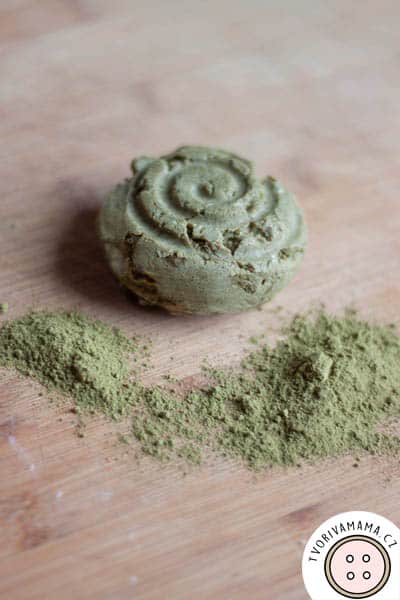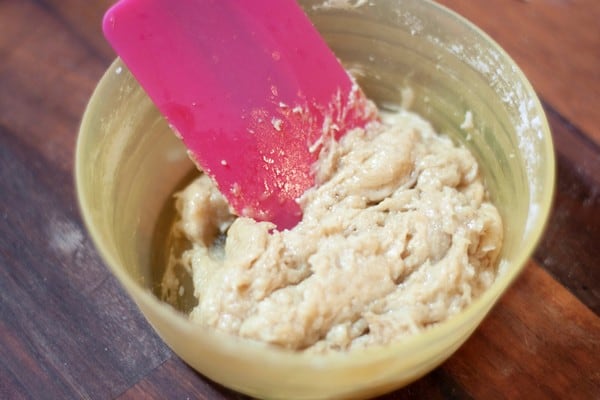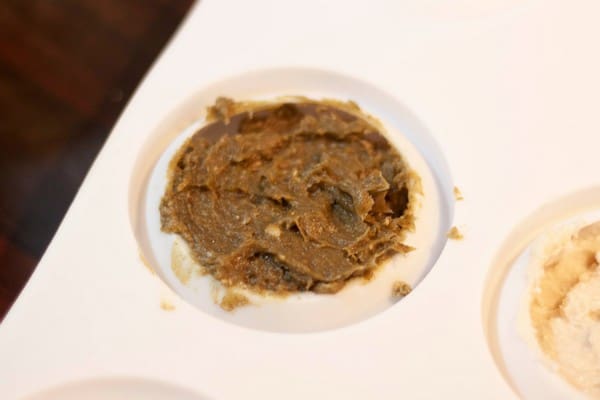I made this Henna Shampoo Bar recipe as a shampoo bar for henna-died hair but it’s also for anyone who just likes the smell of henna.
![]()
(This post may contain affiliate links that help me support this blog and create more tutorials for you.)
Table of Contents
What is Henna
Henna powder is made by drying, milling and sifting the leaves of the henna tree (lawsonia inermis). You can find all sorts of colored henna in the stores with much more than color additives. I buy all-natural Egyption henna with nothing more than just the henna leaves (it dyes the hair orange-red). The henna powder is mixed with liquids such as tea, infusion, water, lemon juice etc. and it’s then used to stain skin or dye hair.
Why a Shampoo Bar
You can read more about the shampoo bars in general, about the price and why they’re so great here. Using a shampoo bar you don’t have to give up liquid shampoo, I sometimes use my favorite Rose and Lemon Balm Shampoo.
Why Henna Shampoo Bar
 The Henna Shampoo Bar is for everyone who dyes their hair with natural henna and also those who don’t dye their hair but like henna. If you read my blog, you know that I like to use shampoo bars and I shared my favorite recipe for the Rose Shampoo(k) Bar. The henna shampoo was something I wanted to try to see what it does with the hair color.
The Henna Shampoo Bar is for everyone who dyes their hair with natural henna and also those who don’t dye their hair but like henna. If you read my blog, you know that I like to use shampoo bars and I shared my favorite recipe for the Rose Shampoo(k) Bar. The henna shampoo was something I wanted to try to see what it does with the hair color.
So what does it do? As for my hair, I think it helps to keep the hair fresh although it doesn’t really dye the hair. I don’t have the possibility to try it out on very light-colored hair and it’s possible that there might be some dying effect with light hair.
How to use it
Like any shampoo bar – wet your hair and run over it with the shampoo bar a few times. Henna makes the bar a bit harder so you might have to wet the bar and maybe make it lather in your hands. I let the shampoo word for a few minutes but even if you wash it off immediately, your hair will be washed.
Henna Shampoo Bar
Let’s do it.
Supplies
This is an amount of ingredients for two shampoo(k) bars of 90 grams/3.17 oz. If you want just one, use half of the amounts given.
Phase A
- 70 g/2.5 oz of SLSA surfactant
- 40 g/1.4 oz of SCI surfactant
- 12 g/0.4 oz of Perlastan surfactant
- 15 g/0.5 oz of rose hydrolate
- 8 g/0.3 oz of liquid silk
Phase B
- 8 g/0.3 oz of palm kernel oil
- 4 g/0,14 oz of mango butter
- 2 g/0.07 oz of avocado oil
- 2 g/0.07 oz of coconut oil
Phase C
- 6 g/0.2 oz of diatomite (kieselgur)
- 6 g/0.2 oz of panthenol
- 4 g/0.14 oz of sodium lactate
- 10 g/0.34 oz of henna powder – for example this
Tools
- shampoo bar/soap mold – THIS is the ideal mold for this shampoo bar
- pans for the water bath
- one beaker for each phase
- wooden or plastic stirring spoons/sticks
- silicone spatula
- digital thermometer – use one that you can immerse in the mixture like this one
- digital scales – I have this one
Henna will make the mixture more dense and as you can see in the photos, I never manage to fill the mold well enough to get a shampoo bar without cracks. The solution would be a) make the mixture more liquid but I quite like the hardness of the bar, b) use a mold without any ornaments.
How to make the Henna Shampoo Bar

Melt phase A in the water bath and check until the temperature is 65-70°C/149-158°F. Melt also the oils and butters in phase B and heat to the same temperature. Incorporate phase B into phase A.
Take it out of the water bath and add the diatomite, henna powder and sodium lactate. When the mixture is at 35-37°C/95-98.6°F, add panthenol.

Fill the mold with the mixture and let it sit until it solidifies (it takes a few hours but I usually wait a whole day).

Take it out carefully and let it cure for 2 weeks in a dry ventilated place (although the henna bar could cure for less). You can use it immediately but if you let it cure, the water evaporates and the bar will last longer.